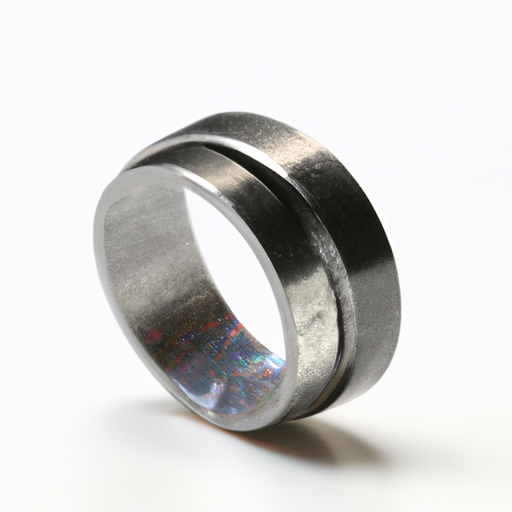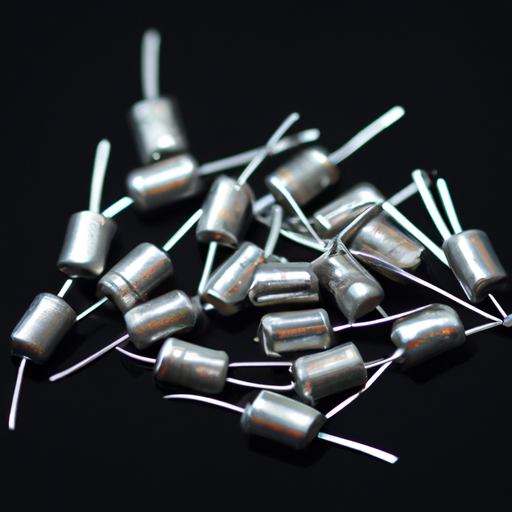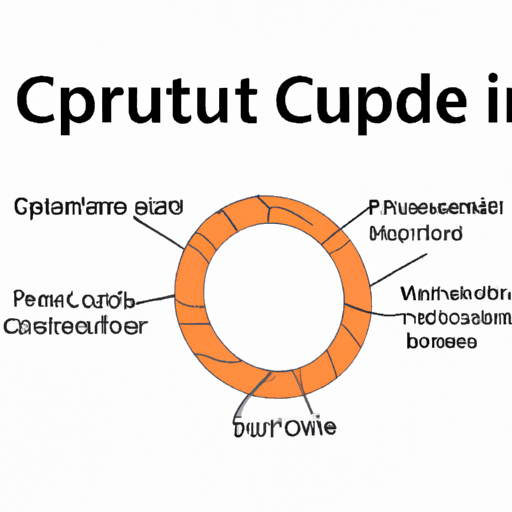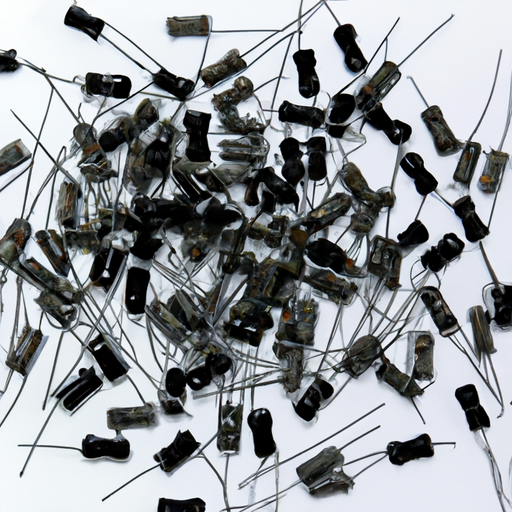What industry is inductors and what development trends are there?
The Inductor Industry and Its Development Trends
I. Introduction
Inductors are passive electronic components that store energy in a magnetic field when electrical current flows through them. They play a crucial role in various electronic circuits, serving functions such as filtering, energy storage, and voltage regulation. As the backbone of many electronic devices, inductors are essential in ensuring the smooth operation of circuits, making them a vital component in the ever-evolving landscape of technology. This blog post will explore the inductor industry, its current landscape, technological advancements, market trends, challenges, and future outlook.
II. The Inductor Industry Landscape
A. Key Players in the Inductor Market
The inductor market is characterized by a mix of established players and emerging companies. Major manufacturers such as Murata Manufacturing Co., TDK Corporation, Vishay Intertechnology, and Coilcraft dominate the market, holding significant shares due to their extensive product lines and global reach. These companies invest heavily in research and development to innovate and improve their offerings, ensuring they remain competitive in a rapidly changing market.
B. Types of Inductors
Inductors come in various types, each suited for specific applications:
1. **Air Core Inductors**: These inductors use air as the core material, making them lightweight and suitable for high-frequency applications. They are often used in RF circuits and applications where low inductance values are required.
2. **Iron Core Inductors**: With iron as the core material, these inductors provide higher inductance values and are commonly used in power applications. They are effective in energy storage and filtering applications.
3. **Ferrite Core Inductors**: Ferrite cores are made from a ceramic material that is magnetically conductive. These inductors are widely used in high-frequency applications due to their low core losses and high efficiency.
4. **Toroidal Inductors**: These inductors have a doughnut-shaped core, which minimizes electromagnetic interference and enhances efficiency. They are often used in power supplies and audio applications.
C. Applications of Inductors
Inductors find applications across various industries, including:
1. **Consumer Electronics**: Inductors are integral to devices such as smartphones, tablets, and laptops, where they help manage power supply and signal integrity.
2. **Automotive Industry**: With the rise of electric vehicles (EVs), inductors are crucial in power management systems, battery chargers, and motor drives.
3. **Telecommunications**: Inductors are used in communication devices to filter signals and manage power distribution, ensuring reliable connectivity.
4. **Industrial Applications**: In industrial settings, inductors are employed in power supplies, motor drives, and automation systems, contributing to efficient operation and energy management.
III. Technological Advancements in Inductor Design
A. Miniaturization of Inductors
One of the most significant trends in the inductor industry is the miniaturization of components. As electronic devices become smaller and more portable, the demand for compact inductors has surged. Miniaturized inductors allow for more efficient circuit design, enabling manufacturers to create slimmer devices without compromising performance. This trend is particularly beneficial for portable devices like smartphones and wearables, where space is at a premium.
B. High-Frequency Inductors
The demand for high-frequency inductors has increased, particularly in radio frequency (RF) applications. Innovations in materials and construction techniques have led to the development of inductors that can operate efficiently at higher frequencies. These advancements are crucial for applications such as wireless communication, where signal integrity and performance are paramount.
C. Custom Inductors
As industries evolve, the need for tailored solutions has become more pronounced. Custom inductors are designed to meet specific application requirements, providing manufacturers with the flexibility to optimize performance. The role of simulation and modeling in the design process has become increasingly important, allowing engineers to predict performance and make necessary adjustments before production.
IV. Market Trends Influencing the Inductor Industry
A. Growth of the Consumer Electronics Market
The consumer electronics market has experienced significant growth, driven by the increasing demand for smartphones, tablets, and wearables. This surge in demand has a direct impact on inductor production, as these devices require efficient power management and signal processing. As manufacturers strive to meet consumer expectations for performance and portability, the inductor industry is poised for continued growth.
B. Rise of Electric Vehicles (EVs)
The automotive industry is undergoing a transformation with the rise of electric vehicles. Inductors play a critical role in EV powertrains, where they are used in battery management systems, inverters, and charging stations. As the demand for EVs continues to rise, the inductor industry will benefit from increased production and innovation to meet the specific requirements of electric vehicles.
C. Expansion of Renewable Energy Technologies
The push for renewable energy technologies has created new opportunities for the inductor industry. Inductors are essential components in solar inverters and wind turbines, where they help manage power conversion and distribution. As the world shifts towards greener energy solutions, the market potential for inductors in these applications is expected to grow significantly.
V. Challenges Facing the Inductor Industry
A. Supply Chain Disruptions
The inductor industry, like many others, has faced supply chain disruptions due to global events such as the COVID-19 pandemic. These disruptions have impacted material availability and production timelines. To mitigate risks, companies are exploring strategies such as diversifying suppliers and investing in local production capabilities.
B. Competition from Alternative Technologies
Inductors face competition from alternative technologies, particularly capacitors and emerging energy storage solutions. As innovations in energy storage continue to evolve, the inductor industry must adapt to maintain its relevance. This may involve developing hybrid solutions that combine the benefits of inductors and capacitors.
C. Environmental Regulations
As sustainability becomes a priority for industries worldwide, the inductor industry must comply with environmental regulations and standards. This includes developing eco-friendly materials and manufacturing processes to minimize environmental impact. Companies that prioritize sustainability will likely gain a competitive edge in the market.
VI. Future Outlook for the Inductor Industry
A. Predictions for Market Growth
The inductor industry is expected to experience steady growth in the coming years, driven by advancements in technology and increasing demand across various sectors. The rise of consumer electronics, electric vehicles, and renewable energy technologies will continue to fuel this growth, presenting opportunities for manufacturers to innovate and expand their product offerings.
B. Emerging Technologies and Their Potential Impact
Emerging technologies such as 5G, Internet of Things (IoT), and artificial intelligence (AI) will have a significant impact on the inductor industry. These technologies require efficient power management and signal processing, creating demand for advanced inductors that can meet the specific needs of these applications.
C. Strategic Recommendations for Industry Players
To thrive in the evolving inductor market, industry players should focus on innovation, sustainability, and customer-centric solutions. Investing in research and development, exploring new materials, and enhancing manufacturing processes will be crucial for staying competitive. Additionally, fostering partnerships with technology companies can lead to collaborative solutions that address emerging market needs.
VII. Conclusion
Inductors are essential components in the world of electronics, playing a vital role in various applications across multiple industries. As the inductor industry continues to evolve, it faces both opportunities and challenges. The growth of consumer electronics, the rise of electric vehicles, and the expansion of renewable energy technologies present significant market potential. However, supply chain disruptions, competition from alternative technologies, and environmental regulations pose challenges that must be addressed.
In summary, the future of the inductor industry looks promising, with continued innovation and adaptation to meet the changing demands of the market. As technology advances and industries evolve, inductors will remain a critical component in ensuring the efficiency and reliability of electronic devices.







